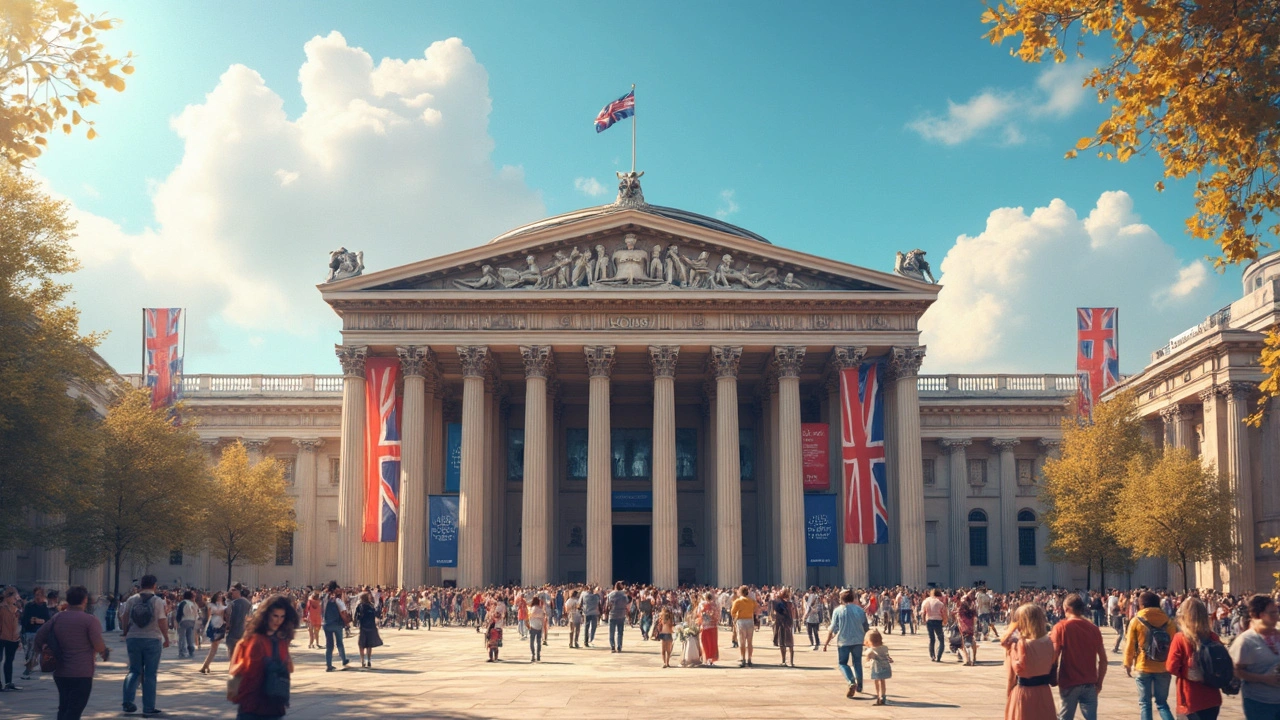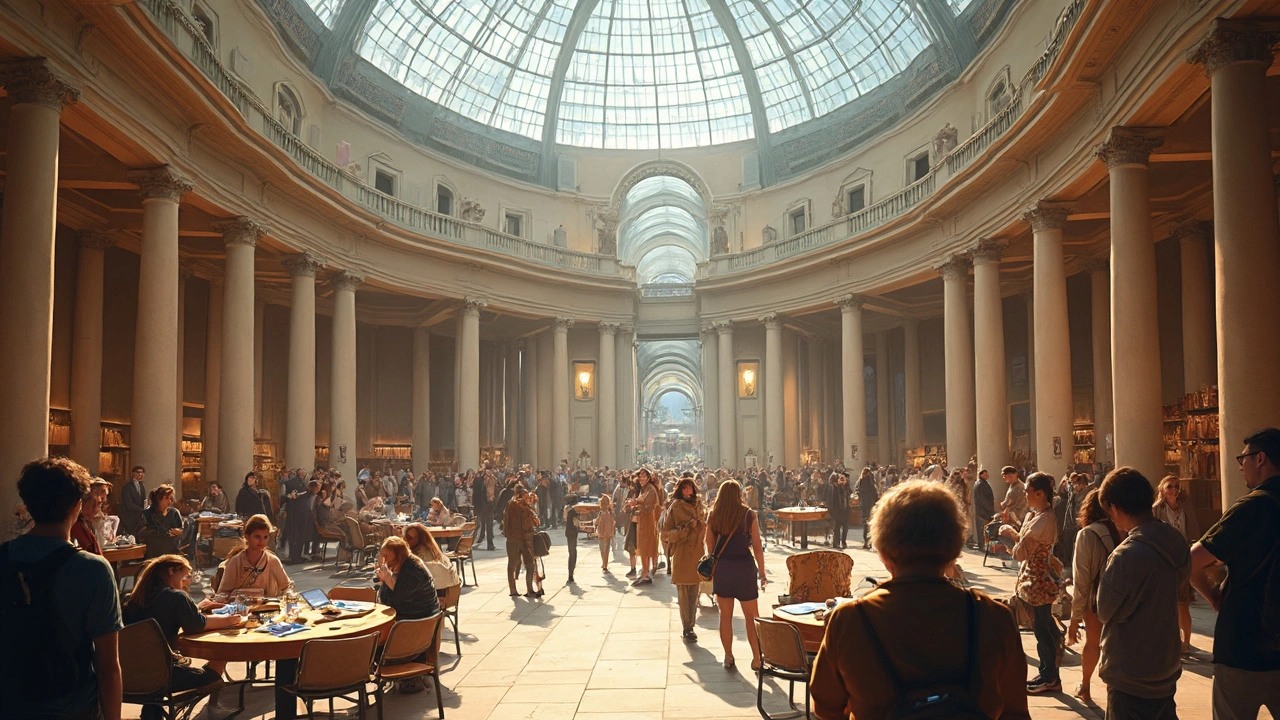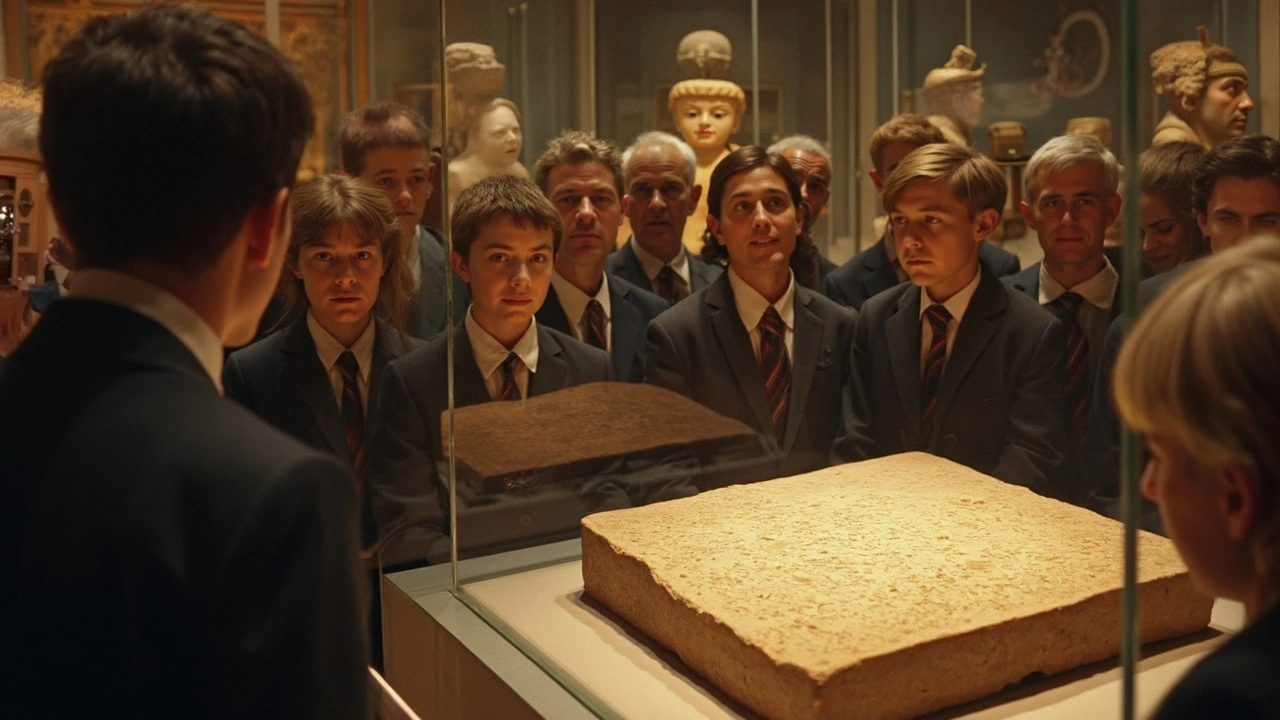
If you’ve ever wandered around London looking for something that’ll blow your mind without breaking your wallet, the British Museum is the jackpot. This place isn’t just another tourist trap; it’s a whopper of an experience—free to enter, packed with stories, and dripping in London character. Right here in Bloomsbury, sandwiched between West End theatres and Russell Square, the museum is both a local institution and a magnet for millions who want a direct connection to the big moments of human history. Few cities have a place like this, where mummies, mosaics, and priceless treasures share halls with school kids, retirees, and exhausted commuters dodging a rainstorm outside. London’s a city that never sits still, but step inside the British Museum, and you’re hit with the kind of calm that only comes when you’re surrounded by 8 million objects and 2,000 years of stories.
The famous bits grab you first—the Rosetta Stone, gleaming in its case, is a legend all on its own, cracking the code of ancient languages and reminding visitors that London is the kind of place where world history just happens to live in the neighbourhood. There’s nothing quite like standing in front of the Parthenon Sculptures, often called the Elgin Marbles, and realising they didn’t just get dusted off for a Sunday afternoon—they’ve shaped debates about art, empire, and identity for centuries. You can follow crowds to see the ancient Egyptian mummies (no two trips through the galleries are alike; sometimes it’s eerily quiet, sometimes it’s thick with excited kids) but don’t skip the smaller rooms: medieval chess pieces dug up on the Isle of Lewis, Japanese samurai armour with dazzling detail, or the Sutton Hoo treasure found buried in a Suffolk field. That last one is a hit for anyone who’s explored East Anglia, then hit the museum for the original haul.
The museum’s biggest surprise? It isn’t just about ancient Egypt or lost Greek statues. There’s the Enlightenment Gallery, which actually feels like stepping into one of those old Gentlemen’s clubs London used to be famous for—oak cases, oddities, little handwritten notes from 18th-century collectors who roamed the world before Instagram. Want a crash course in local history? Check the Roman London displays. You’ll find fragments from the city’s earliest days, alongside the cramped clay pipes and trinkets dug up by the Thames—London before the skyscrapers. It all feels personal, like a string of stories stitched into the city’s DNA. Not much beats bringing someone new and getting to play tour guide: "See that? That’s from the only samurai helmet ever found in a British garden."
And if you thought museums were stuffy, try people-watching in the Great Court. Ever since Lord Foster’s glass roof went up in 2000, the place has turned into a real-life village square, complete with British families, business types from Holborn, and tourists comparing Pret sandwiches. Watch for lunchtime gallery talks by real Londoners—curators who actually know how to bring coins, weapons, or ancient boardgames to life, minus the textbook language. It pays to check the special exhibitions too. In 2024, the Faith after the Pharaohs show pulled in everyone from local students to retired vicar groups. Every season delivers something: Ancient Persia one month, Caribbean history the next.

If you’re after the full British Museum experience, you’ve got to think local. Crowds peak fast, especially during half-terms and on Saturdays, so seasoned Londoners know to hit the galleries either early—doors open at 10am—or later in the afternoon, when things thin out after the school groups clear. Fridays go late (until 8:30pm), perfect for a chilled stroll after work or a spontaneous date night; it’s one of those rare London attractions that gives off a completely different vibe when the sun goes down. Security checks are swift but there’s no cloakroom for huge bags, so pack light.
Unless you’re living for queues and cold sandwiches, avoid the main café at peak lunch—Covent Garden’s street food scene is only a ten-minute walk, with places like Flat Iron or Dishoom if you want something memorable. For a classic touch, pop over to Tea & Tattle across the road. Locals swear by its scones and pot of Earl Grey. If you’re just after a pint and some peace, the Museum Tavern is a stone’s throw away and has been serving London’s wanderers for generations. Want to pack more value into your visit? Check the free tours and spotlight lectures. They’re low-pressure, run by staff who mix facts with real London wit, and they’re perfect for anyone who needs to stretch their memory beyond TikTok videos.
Navigating the building isn’t tricky but keep a map handy. The centrepiece, the Great Court, makes a perfect meeting spot, but the wings are easy to lose yourself in. The Egyptian galleries run along the north side; the ever-popular Greek marbles hold down the west. Don’t stress about ticking off everything—locals rarely try to conquer it all in one go. Treat the place like Hyde Park—visit regularly, focus on a corner each time, and you’ll keep finding new favourites.
If accessibility’s a concern, the museum scores well: lifts, step-free entry, and tactile maps for visually impaired visitors. There’s also a fantastic children’s backpack scheme, which gives young Londoners activities to keep little ones from fizzing out after the Egyptian mummies. Souvenir hunting? Skip the big gift shop in favour of the smaller ones peppered throughout the galleries—better for offbeat finds, from quirky notebooks to actual British-designed jewellery. And if you’re working remotely, the Reading Room is as close to Hogwarts as it gets—just don’t expect WiFi everywhere; dead zones exist, but that’s all part of the charm. You’re not here to check your email, after all.

Plenty of Londoners pass by the columned entrance without giving it a second thought, but the British Museum has always been a battleground of ideas, not just a collection of old things behind glass. Its roots go back to 1753, when Hans Sloane—London’s king of collecting, chocolate enthusiast, and all-out hoarder—left his stash of oddities to the nation. The museum opened its doors in the age of Enlightenment, promising to bring the world to Londoners without a plane ticket. It’s worked: more than six million people dropped by in 2023 alone, making it one of the UK’s busiest indoor hangouts, somewhere between a civic shrine and a gigantic attic.
But did you know the British Museum wasn’t always strictly about the past? London’s creatives pop in for inspiration, university lecturers lead walking seminars, and schoolchildren write stories about ancient gods beneath the Greek columns. It’s a sign you can’t truly separate London life from its museums—spend a weekend on Tottenham Court Road, and chances are someone will mention that time they got lost among the sarcophagi. The museum’s also been at the centre of some fiery debates: calls for returning artefacts, most notably to Greece and Nigeria, keep the institution under a harsh London spotlight. These conversations spill into the city’s newspapers and pubs, and the British Museum isn’t shy about hosting public panels and tours that don’t skirt around the tricky stuff. That’s London for you—unashamed of its history, always debating, never boring.
The pandemic changed just about everything in the city, museums included. These days, the British Museum is more digital: virtual tours, downloadable guides, and livestreamed curator talks make it as useful to explore on rainy days from home as in the real thing. For visitors living in London, membership perks are worth a look: invitations to exclusive events, behind-the-scenes tours, early access to blockbuster exhibitions. Locals who want to dodge crowds scoop up morning slots and invite friends for an alternative to brunch—fresh coffee, ancient artefacts, and a sense of belonging in the heart of London. Fancy attending one of the late events? Expect pop-up performances from local musicians and spoken word artists taking over the galleries, turning the echoing halls into something closer to the spirit of Camden Market on a Saturday night.
The British Museum isn’t just another dusty stop on the way to Soho. It’s one of those rare London spaces where you can travel the world without leaving the postcode. It’s a place that changes with the city, challenges its residents, and keeps drawing people back for more. Whether you’re a proud Londoner, a fresh arrival, or just passing through, the museum remains the city’s living room—a place to discover, argue, and rediscover what it means to be part of this wild, restless capital. History isn’t locked away here. It’s as alive as the city around it.
| Fact | Detail |
|---|---|
| Annual Visitors | 6.5 million (2023 estimate) |
| Objects on Public Display | About 80,000 (from a total of 8 million) |
| Opening Hours | 10:00-17:00 daily, Fridays until 20:30 |
| Entry Fee | Free (exhibitions may require a ticket) |
| Famous Exhibits | Rosetta Stone, Parthenon Sculptures, Sutton Hoo treasure |
| Transport Links | Nearest Underground: Tottenham Court Road & Russell Square |
| Opened | 1759 |